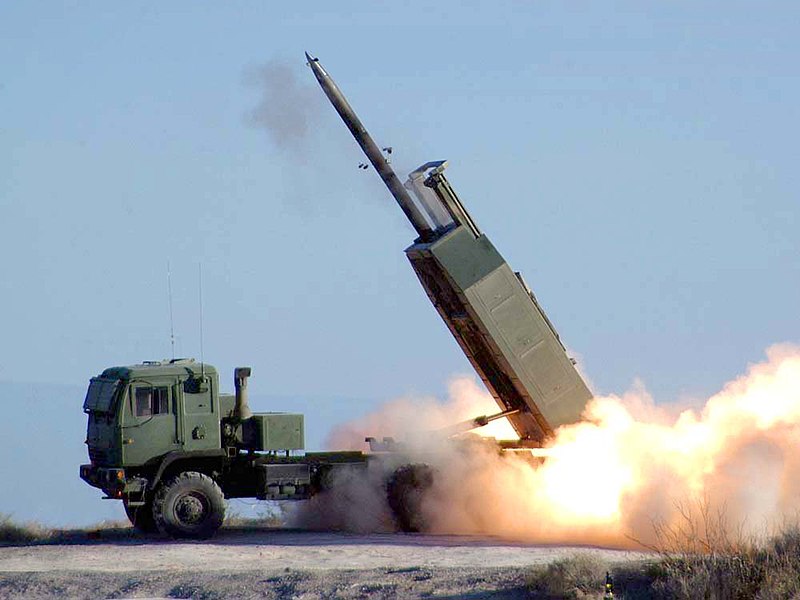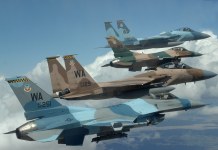On November 14, the US Army announced that it had awarded a $521 million contract to Lockheed Martin for Guided Multiple Launch Rocket Systems to replenish GMLRS provided from the Department of Defense (DoD) inventory to Ukraine.
Decoding HIMARS’ ‘Design Philosophy,’ Latest Images Show Russia Could Be Analyzing Deadly US Rockets
Record Kill! Ukrainian Sniper ‘Hunts’ Russian Soldiers One By One, Comes Close To Setting Up A World Record – Kyiv Claims
The contract, which was given to the defense firm Lockheed Martin between October 21 and November 2, is for the procurement of guided artillery rockets fired by mobile launchers called HIMARS.
The GMLRS (pronounced ‘Gimmlers’ or ‘Glimmers’) is an artillery rocket, an explosive weapon generally driven by solid fuel. It can be fired one by one or in salvos.
In a statement released on November 14, William LaPlante, the undersecretary of defense for acquisition and sustainment, noted that the deal shows the substantial impact of GMLRS as a crucial combat asset for the USA’s international allies.
“They are great examples of contracting approaches we are using to accelerate award timelines and ultimately deliver capability more rapidly,” LaPlante said. It is currently unknown how many rockets will be purchased.

Both Lockheed Martin and the US Army remained silent about the numbers. However, government budget records show that since 2012, the typical cost to purchase a single GMLRS rocket has ranged between $100,000 and $130,000 each. With that amount, the contracts would cover around 4,000 replacement rockets.
Last month, Army acquisition chief Doug Bush said that the US Army is speeding up contracts to restock supplies going to Ukraine using various methods. The Army is still “committed to getting things on contract as quickly as possible to ensure our stocks are rapidly replenished,” Bush stated in the statement on November 14.
In addition to an order of GMLRS, Lockheed Martin was also awarded a $179 million contract earlier this fall to replace High Mobility Artillery Rocket Systems, or HIMARS, which are also being shipped to Ukraine.
HIMARS is credited with destroying multiple Russian command centers and ammo and supply depots in Ukraine. As of October, the US military had spent almost $3.4 billion purchasing weapons and equipment related to Ukraine.
Guided Multiple Launch Rocket Systems
Lockheed recently revealed that it intended to double the manufacturing line of both HIMARS and GMLRS. The Defense Department has stated that it has supplied 16 HIMARS launchers to Ukraine so far and that it has also granted Kyiv funds to purchase 18 more, though these will take years to produce and supply.
The GMLRS rockets have a strike range of around 52 miles and carry a 200-pound explosive warhead, making them the longest-reach weapon the United States has ever supplied to Ukraine.
HIMARS (High Mobility Artillery Rocket System) can fire long-range guided rockets. The launchers are simply one component of the whole weapon system. The munitions they fire, known as a Guided Multiple Launch Rocket System, or GMLRS, are also a crucial part of the system.
General Milley stated that the Pentagon had provided Kyiv with thousands of GMLRS rockets, although the precise quantity fired by Ukrainian forces is unknown.
Lockheed has produced more than 60,000 GMLRS rockets since the program’s inception more than 20 years ago, a company representative told The New York Times.
:quality(70)/cloudfront-us-east-1.images.arcpublishing.com/archetype/ZTSG3YULHFAQXH5FP37ZQLSETM.jpg)
Ukrainian troops had a history of deploying artillery rockets and were adept with the HIMARS and the GMLRS. The Ukrainian forces used the launcher’s maneuverability to go to new targets quickly, shoot and reload swiftly, and then drive away before Russian artillery could strike their location.
The American rockets had a more extended range than the Soviet-era weapons the Ukrainian soldiers had previously employed. Furthermore, they quickly were able to assault targets Russia had thought were entirely out of range, like command headquarters and depots, among others.
Russian authorities have found it more challenging to command military operations due to the strikes on command infrastructure, which have kept them on the move and interfered with their communications. Gen. Mark A Milley said that more than 400 Russian targets, including command centers and ammo stores, were struck by HIMARS.
The manufacturer has supplied this weapon system to several countries, including Bahrain, the United Kingdom, Finland, France, Germany, Italy, Japan, Jordan, Poland, Romania, Singapore, and the United Arab Emirates.
- Contact the author at ashishmichel@gmail.com
- Follow EurAsian Times on Google News




